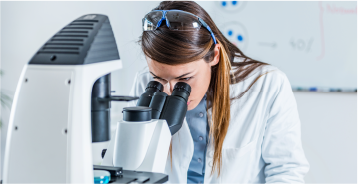Epigenetics and addiction – why quitting is more than just sheer willpower
 Health and Wellness
Health and Wellness
We need to process your personal information for you to interact with this website. We also use Cookies to enhance your experience. Please accept the Website Ts and Cs and Data Protection and Privacy Policy to fully access the website.
Feeling less motivated, more irritable than usual and not getting enough sleep? Well, if you’re a little older you might just be experiencing the first symptoms of menopause … male menopause, that is.
Yes, men’s bodies also change as they get older, and one of the less talked about changes is andropause (often called male menopause, but more accurately late-onset hypogonadism).
Andropause is a gradual decline in the levels of androgens (sex hormones), especially testosterone, in older men, as well as the constellation of symptoms that accompany this decline.
What causes andropause?
In most men, testosterone production slowly declines around middle age, roughly 1% per year starting between 30 and 40. Because the decline is gradual, many men don’t notice any symptoms initially. Many signs and symptoms only become noticeable when testosterone levels fall below a threshold or when compounded by lifestyle factors or other health problems.
How to determine if you are in andropause
Clinically, the diagnosis of andropause generally requires evidence of low testosterone (typically measured in the morning on multiple occasions) and relevant symptoms (especially reduced sexual function).
Some guidelines for determining if a man is in andropause required that at least three sexual symptoms (like reduced libido, fewer spontaneous erections and erectile dysfunction) are observed in conjunction with testosterone levels below a certain cutoff (for example 7 nmol/L) before being considered to have late-onset hypogonadism.
Andropause symptoms
Some of the more common symptoms of andropause include:
The problem with diagnosing andropause only based on these symptoms is because they may occur in other chronic illnesses, be a result of depression, obesity, sleep disorders or even some medications. This really complicates the picture.
Andropause treatment
Some critics argue that labelling andropause as ‘male menopause’ overhypes normal and often mild age-related hormone decline. This may risk over-diagnosis and overuse of testosterone therapy.
Some treatment options include:
“Paws or claws” menopause and andropause is real: Let’s talk about it!
It’s not just a hot flush and mood swing, it’s a natural life stage that deserves understanding, support and a little bit, maybe a lot, of humour.
Menopause and andropause shouldn’t be a mystery or a taboo.
Fun fact: Over half of menopausal women feel weird talking about it at work. Let’s change that!
A South African reality check
In South Africa menopause and even andropause is still a bit hush-hush. Be part of the movement to educate, support and celebrate every stage of life.
So, while the term ‘male menopause’ may be an oversimplification, there is truth behind the term. Andropause isn’t a new phenomenon, but by equipping yourself with the knowledge of what initial symptoms may look like, you can get ahead of the curve and get the treatment you may need. No hot flashes for you, good sir!
References:
Male menopause: Myth or reality? Mayo Clinic. Accessed 2025. Available here.
The 'male menopause'. NHS. Accessed 2025. Available here.
Andropause – state of the art 2015 and review of selected aspects. NIH. 2015. Available here.
The male menopause—does it exist? NIH. Accessed 2025. Available here.